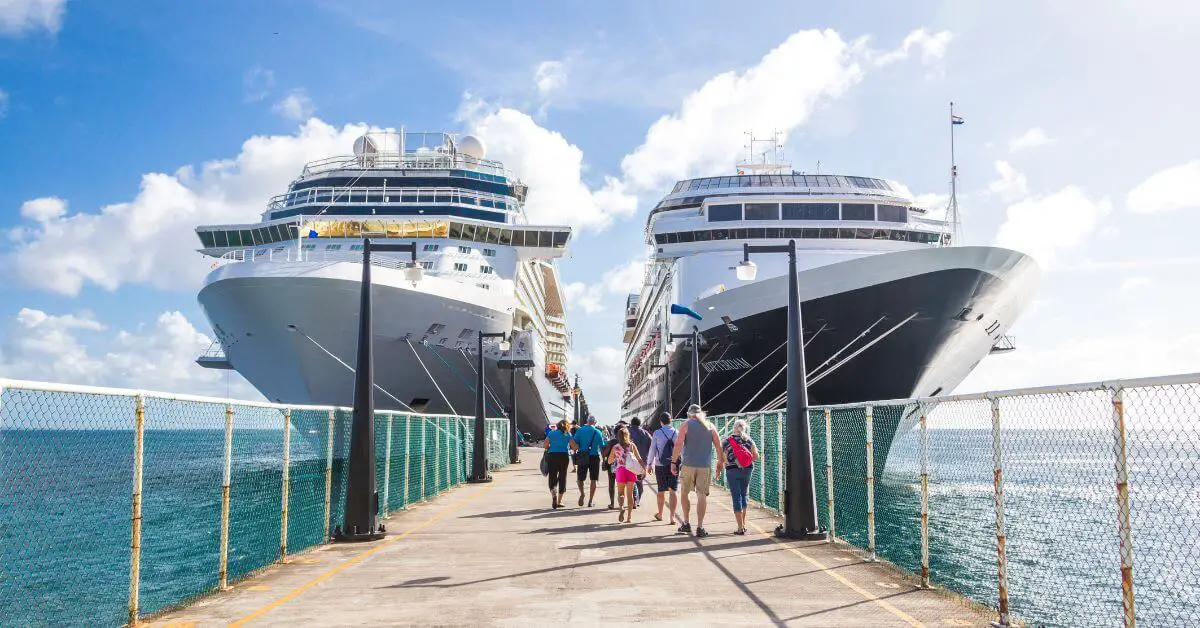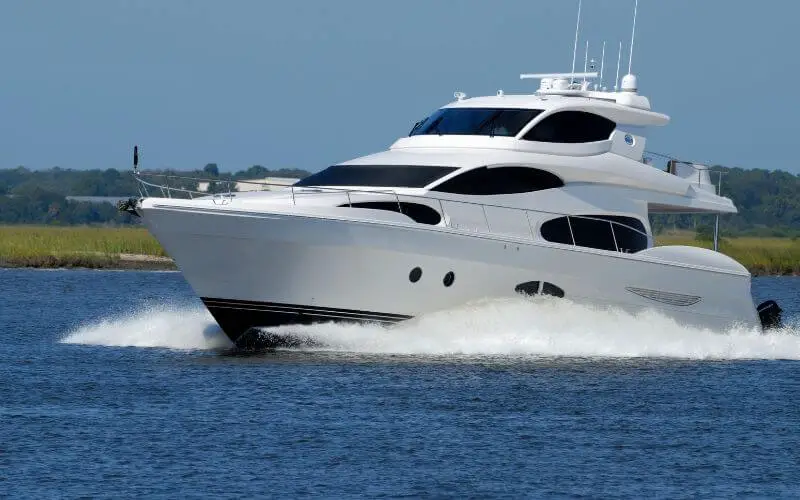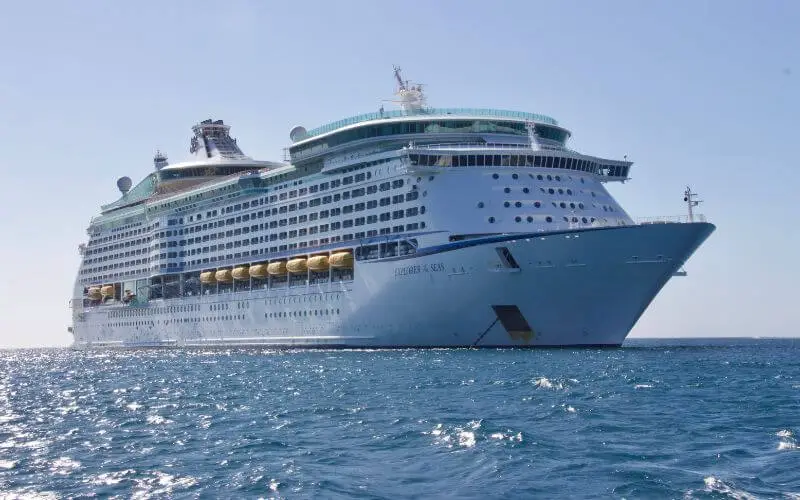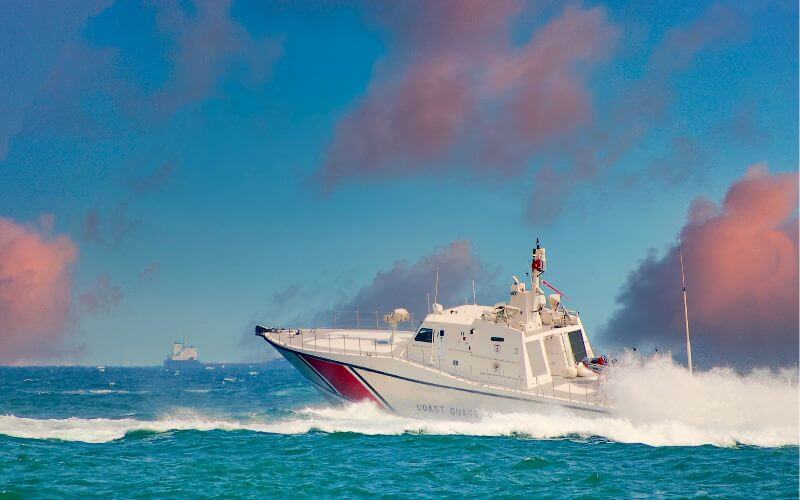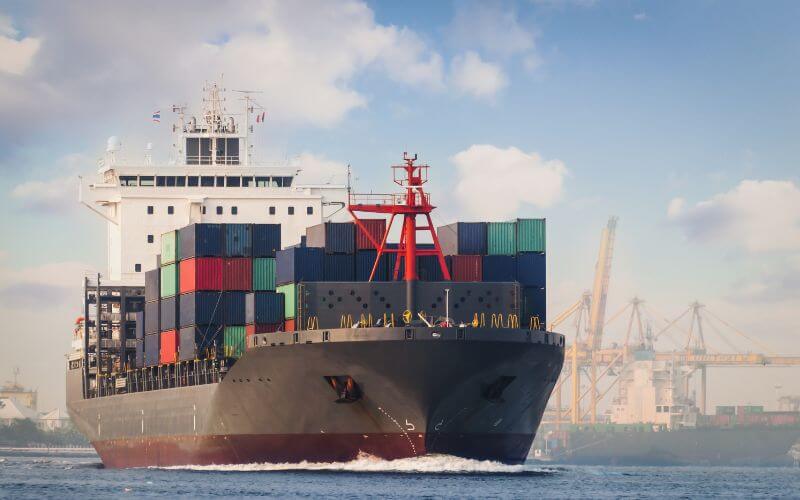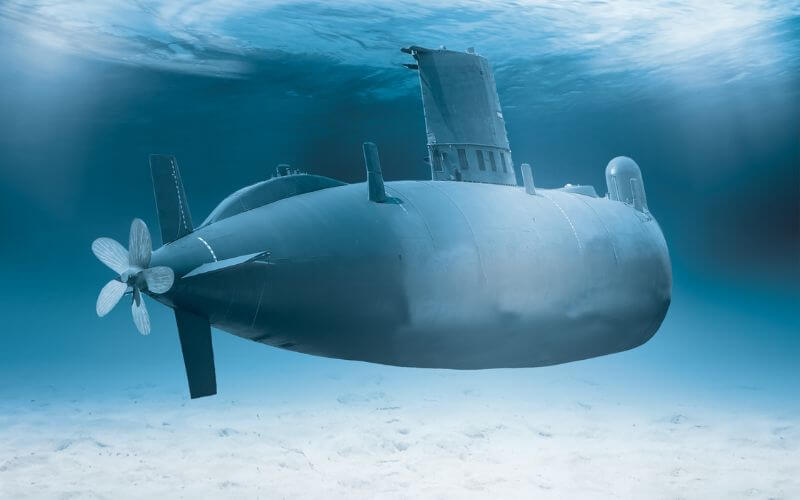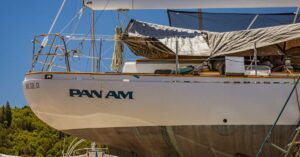Have you ever wondered what sets a boat apart from a ship? While these terms are often used interchangeably, the two have distinct differences. In this article, we will explore the unique characteristics of boats and ships, shedding light on the nautical terminology and clearing up any confusion. So, let’s dive in!
Definition of Ships and Boats
What is a Boat?
A boat can be defined as a small to medium-sized watercraft that is primarily designed for domestic or recreational use. Boats are typically built with a smaller size and capacity compared to ships. They can be made of various materials such as wood, fiberglass, or metal and are propelled using oars, paddles, sails, or engines.
Boats are commonly used for activities like fishing, water skiing, leisure cruising, or transportation across smaller bodies of water like lakes, rivers, or coastal areas.
What is a Ship?
On the other hand, a ship is a larger, seafaring vessel designed to transport people, goods, or cargo across long distances or through the open sea. Ships are usually constructed with a much larger size, structure, and capacity than boats.
They are often made of stronger materials like steel or aluminum and are equipped with advanced navigational systems, communication devices, and machinery.
Boat vs Ship: What’s the Difference Between a Ship and a Boat
The official US Naval Education and Training Command guidelines state that you can carry a boat on a ship, but you can’t carry a ship on a boat. Generally speaking, this means that if a craft is large enough to carry its lifeboats or dinghies, it’s considered a ship. Here are some differences between ships and boats:
1. Large Vessel vs Small Vessel
One of the primary factors differentiating boats from ships is their size. Generally, boats are smaller in scale compared to ships. While no specific measurement defines the threshold between the two, the rule of thumb is that a vessel under 197 feet (60 meters) in length is considered a boat (or yacht), and anything larger is a ship. Generally speaking, a ship is a large vessel, and a boat is a smaller one.
2. Purpose and Functionality
Another critical distinction lies in their purpose and functionality. Boats like fishing, leisure cruising, or water sports are designed for personal or recreational use. They are typically seen near coastlines, lakes, or rivers and are often transported on trailers.
On the other hand, ships are mainly used for commercial purposes, transporting cargo or passengers across large bodies of water, including oceans. Ships are built to withstand rough sea conditions and stay at sea for extended periods.
3. Construction and Design
Regarding construction and design, boats and ships have notable differences. Boats often use lightweight materials like fiberglass, aluminum, or wood. They usually have a simple hull structure designed to navigate in calm waters.
Ships, however, are constructed with more robust materials such as steel. Their complex hull design enables them to withstand rough waves and challenging sea conditions.
4. Navigational Capabilities
Boats and ships also vary in terms of their navigational capabilities. Boats generally have a more straightforward navigation system, often consisting of basic instruments like a compass, GPS, and depth finder. They rely on chart reading and local navigational aids for their journeys.
Ships, on the other hand, are equipped with advanced navigation systems such as radar, sonar, and sophisticated GPS technology. They also have onboard communication systems to maintain contact with other vessels and marine authorities.
5. Crew Size and Accommodation
Due to their size and purpose, boats and ships also differ regarding crew size and accommodation facilities. Boats often have a smaller crew, typically limited to a few individuals, and may need dedicated sleeping quarters or extensive amenities.
Ships, on the contrary, may have a large permanent crew consisting of deckhands, engineers, officers, and catering staff. They offer cabins, dining areas, recreational spaces, and medical facilities to support crew members during long voyages.
6. Power
Regarding power, the difference between a boat and a ship is primarily related to their propulsion systems and capabilities. Here are some key points that differentiate boats and ships in terms of power:
Boat:
- Boats generally have a smaller power capacity compared to ships.
- Engines, such as inboard or outboard motors and gasoline or diesel engines, commonly power them.
- Boats may also utilize sail power, such as on sailboats or yachts.
- The power of boats is typically suitable for shorter distances and recreational purposes.
Ship:
- Ships have a larger power capacity to meet the demands of their size and intended purpose.
- They are usually propelled by more powerful engines, such as diesel engines or gas turbines.
- Ships may have multiple engines and propellers, enabling them to achieve higher speeds and navigate over longer distances.
- The ships’ power allows them to transport goods and passengers or perform specific tasks like deep-sea exploration or military operations.
Note: It’s important to note that a vessel’s power can vary significantly within both the boat and ship categories. Depending on their specific design and purpose, there are fast, high-powered boats and slower, lower-powered ships.
7. Where They Sail
In terms of where they sail, the difference between a boat and a ship lies in the typical areas or bodies of water where they operate. Here are some distinctions:
Boat:
- Boats are generally designed and used for sailing in inland waters, such as lakes, rivers, canals, and bays.
- They are often suitable for coastal areas and may venture far from shore.
- Boats are commonly used for recreational purposes, such as fishing, water skiing, leisurely cruising, or personal transportation on smaller bodies of water.
Ship:
- Ships are designed and built to sail in larger bodies of water, such as oceans, seas, and major waterways.
- They are capable of long-distance voyages and international travel.
- Ships often operate on established shipping routes, connecting various ports and harbors worldwide.
- Different types of ships serve specific purposes, such as container ships transporting goods or cruise ships carrying passengers on vacation.
8. Vessel Tonnage
Ships typically have a higher tonnage as they are designed to carry a substantial amount of cargo or passengers. For example, cruise ships can have a large passenger capacity, often carrying thousands of passengers, while cargo ships can transport significant amounts of goods. A boat could never compete with the cargo capacity of a cargo ship.
On the other hand, boats usually have lower tonnage and are designed for more specific purposes, such as recreational boating or shorter-distance transportation.
9. Legal and Regulatory Requirements
Lastly, boats and ships are subjected to different legal and regulatory requirements. Depending on their size and purpose, boats often have fewer regulations to adhere to, primarily if they are utilized for personal use.
Ships in commercial operations are subject to strict safety standards and international conventions established by maritime organizations. These regulations include crew qualifications, safety equipment, communication systems, pollution control, and more.
Types of Boats and Ships
Types of Boats
There are various types of boats, and they can be differentiated based on their size, purpose, and design. Below are some of the most commonly used types of boats:
1. Fishing Boats: These are boats primarily designed for fishing. They can be small or large, powered by engines or sails, and have features like fishing rods, storage lockers for gear, live well for fish, and fish finders.
2. Ski Boats: These are boats designed for water skiing, wakeboarding, or other similar activities. They usually have a powerful engine and a pointed hull to create higher wakes and are equipped with mirrors, towers, and ballast bags to help skiers perform stunts.
3. Pontoon Boats: They have a flat, stable, and rectangular-shaped deck on two or three pontoons (pressurized tubes). They offer ample deck space and seating for multiple people and can be used for entertainment, sunbathing, or simple cruising.
4. Personal Watercrafts: They are compact, motorized vehicles, often called jet skis. These boats can carry one to three people and are designed for speed, performing tricks and maneuvers at sea.
5. Deck Boats: They have an expansive deck with more deck space, seating capacity, shade protection, and feature amenities like a kitchenette, bathroom, and onboard entertainment systems.
6. Kayaks and Canoes: They are simple paddle boats designed for one or two passengers. They are lightweight, easy to maneuver, and can navigate narrow waterways or rapids.
7. Sailboats: These are boats propelled by the wind. They come in various sizes and designs, from small ones for recreational purposes to large ones for transoceanic travel. Some have only one sail, while others have many sails to harness the wind effectively.
These are just some of the most popular types of boats with their respective characteristics. However, the list of boats can go much longer depending on their intended use, design, and location.
Related Article: Different Types of Boats | Your Guide to Boat Types
Types of Ships
Ships can be classified into various types based on their intended purpose and design. Here are some common types of ships:
1. Container Ships: These ships are specifically designed to transport large quantities of containers efficiently. They have specialized container holds and handling equipment.
2. Bulk Carriers: Bulk carriers transport unpackaged cargo such as grains, coal, or ore. They have large cargo holds and equipment for efficient loading and unloading.
3. Tanker Ships: Tankers are designed to transport liquid cargo, such as crude oil, petroleum products, or chemicals. They have specialized storage tanks and pumping systems.
4. Passenger Ships: These ships are designed to carry passengers for travel, tourism, or entertainment purposes. They can range from small cruise ships to large ocean liners.
5. Naval Ships: Naval ships are used by navies for various purposes, including warfare, defense, and patrol. They can include aircraft carriers, destroyers, frigates, submarines, and more.
6. Offshore Ships: Offshore ships are used for various activities in offshore oil and gas operations, such as supply and support, diving, construction, or accommodation.
7. Special Purpose Ships: These ships are designed to serve specific purposes, such as research vessels, icebreakers, fire-fighting ships, or salvage vessels.
It’s important to note that these are just a few examples, and many other types of ships are used for different purposes. The ships’ classification can vary depending on their specific characteristics and functions.
Related Article: Different Types of Ships: Insights into Various Ship Types
Frequently Asked Questions
Is a Cruise Ship a Boat?
A cruise ship is generally considered a ship rather than a boat. Cruise ships are large passenger vessels designed for extended travel and entertainment. They are typically larger than most boats and have amenities like dining halls, entertainment venues, swimming pools, and more to provide a comfortable and memorable vacation experience.
Cruise ships can accommodate thousands of passengers and crew members, making them much larger than most boats and small watercraft. They are equipped with advanced technology and safety mechanisms such as stabilizers, navigation systems, and life-saving equipment, allowing for safe and efficient voyages over long distances and weather conditions.
The bottom line is that you should never refer to a cruise ship as a boat if it carries travelers on the ocean for vacation.
Is a Submarine a Boat or a Ship?
A submarine can be considered a type of watercraft since it is designed to navigate underwater using a self-contained power source and other equipment. However, submarines are often classified as a type of ship because of their size, mission capabilities, and construction materials.
Submarines are specialized vessels used in naval applications for various purposes such as reconnaissance, surveillance, or warfare. They are generally larger and equipped with advanced technology and systems like propulsion, weapons, communication, and navigation, similar to other ships.
Therefore, a submarine can be considered both a boat and a ship, depending on the perspective and classification system used.
Can the Number of masts on the Vessel be used to Differentiate Between a Boat and a Ship?
The distinction between a boat and a ship based on the number of masts can be blurry and vary depending on different sources and interpretations. In general, the number of masts alone is not a defining factor for determining whether a vessel is a boat or a ship.
Traditionally, a boat was considered to have a single mast, whereas a ship was defined as having multiple masts. However, this definition needs to be consistently applied, and the distinction between boats and ships relies on other factors, such as size, function, and seaworthiness.
What is the Difference Between a Sailing Ship and a Sailboat?
A sailing ship and a sailboat are different types of vessels propelled by wind using sails, but they differ in size, purpose, and design.
Depending on size, a sailboat, also known as a sailing dinghy, boat, or yacht, is generally a smaller vessel designed for recreational purposes. Sailboats can range in size from lightweight dinghies like the Optimist dinghy to larger yachts. They are typically used for leisurely sailing, racing, or cruising. Depending on their design, sailors often have single masts and various rigging configurations, such as sloop, cutter, or ketch.
On the other hand, a sailing ship refers to a larger vessel used for commercial, military, or historical purposes. Sailing ships are often associated with historical eras, such as the Age of Exploration or the tall ship era. Sailing ships historically transported goods and people or engaged in naval warfare.
Conclusion
In conclusion, while boats and ships seem interchangeable, they have distinct differences based on size, purpose, construction, navigational capabilities, crew size, power, where they sail, and legal requirements.
Basically, a ship can carry a boat, but a boat cannot carry a ship. While no specific tonnage threshold clearly differentiates the two, boats are generally smaller and operate in inland waters or coastal areas, often for recreational purposes.
Ships, on the other hand, are larger, have greater power capacity, and are designed for long-distance voyages across oceans and seas. They serve various purposes, such as transporting goods or passengers and navigating established shipping routes worldwide.
While these differences provide a general framework, it’s worth noting that there can be variations and exceptions within each category. The line between boats and ships can sometimes blur, with vessels possessing characteristics of both. Additionally, classifications can differ based on specific conventions or regulations.

